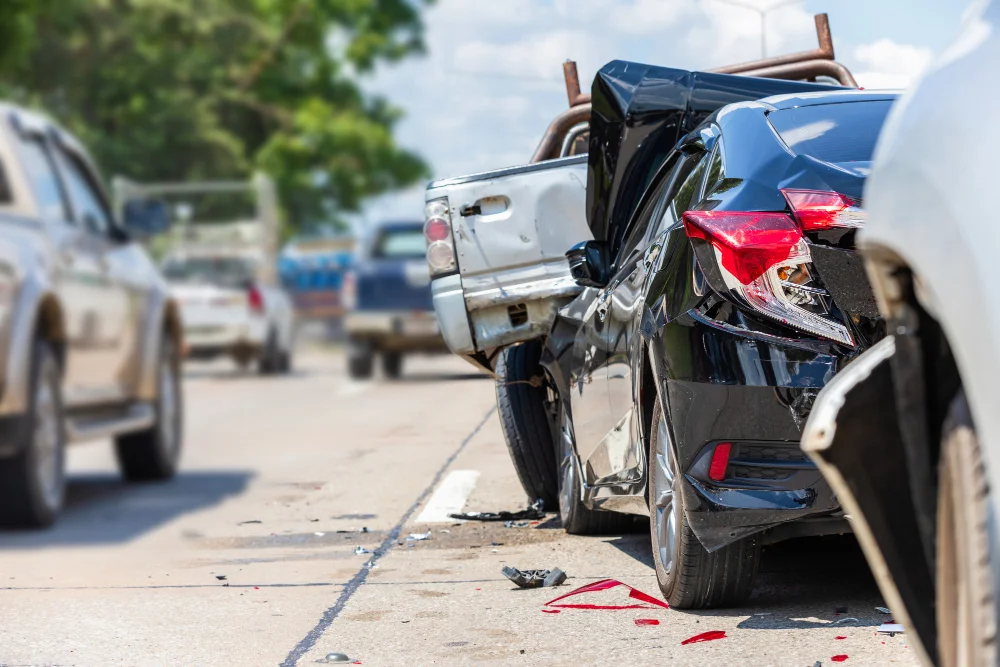Whether you’re driving a car, riding a bike, or walking down the street, the chance of a car accident occurring is always there. The real problem occurs when someone causes you or your loved one to sustain a serious, life-changing injury as a result of their negligence.
If you or a family member have been involved in a traumatic car accident recently and are experiencing serious injuries as a result, then keep reading. Here is everything you need to know about car accident injuries.
Let’s get started!
Whiplash Injuries
Whiplash injuries are caused by a sudden jerk or force on the neck that is violent and can cause damage. Symptoms of whiplash include:
- headache
- dizziness
- soreness
- neck pain
- shoulder stiffness
It also shows signs of decreased range of motion in the neck, muscle spasms, and blurred vision. It is important to seek medical care immediately if any of these symptoms are present, as they can worsen over time.
To prevent whiplash, always make sure to wear a seatbelt in the car and ensure that your head is properly supported with a headrest when driving or riding in a vehicle. Even a minor accident can cause whiplash and proper safety precautions should be taken to ensure the safety of yourself and your passengers.
Head Injuries
Head injuries are a common consequence of car accidents, often leading to long-term health issues ranging from mild headaches and chronic fatigue to possibly deadly trauma. To prevent serious injury in the event of an accident, drivers should always buck up and wear head restraints. If a driver is shoved forward suddenly upon impact, the neck and skull can take a significant amount of force, which can cause strain, concussion, and much worse.
To help mitigate this risk, drivers should stay attentive on the roads, be familiar with their vehicle’s handling and braking capabilities, and always drive at a speed suited to the conditions. Drivers should also make sure their vehicles are regularly serviced and checked over, further reducing the risks of injury due to mechanical failure in the event of an accident.
Back Injuries
Back injuries can range from minor sprains and strains to serious fractures, dislocations, and herniated disks. If your symptoms include back pain, numbness, tingling, or weakness, you may need additional tests to better assess the situation. You may also want to consult a doctor with experience in car accident injuries since they may be better prepared to diagnose you and recommend treatments tailored to your recovery.
It is also important to report your injuries as soon as possible, as they can worsen over time if left untreated. To minimize your risk of serious back injuries, make sure to wear your seatbelt, be aware of your surroundings, and practice good driving conditions at all times.
Chest Injuries
Chest injuries are a common result of car accidents and can range from bruises to broken bones. When correctly identified and treated, recovery times can vary from days to several weeks depending on the severity. In the event of a collision, a driver should immediately take notice of any chest pain or difficulty breathing.
Pain, bruising, or tenderness in the chest area, may indicate a chest wall fracture or lung contusion. While a cracked rib is not as serious, it may bruise organs and can be painful. If the seatbelt is worn correctly, a seatbelt injury or bruise may be noticed.
In the event of a more serious injury such as a pneumothorax (collapsed lung), the driver should seek immediate medical attention for difficulty breathing, or chest pain that is worsened by deep breathing or coughing. Drivers can reduce the risk of chest injuries by wearing seatbelts and keeping airbags maintenance up to date.
Multiple Fractures
Multiple fractures, including breaks in one or more bones, can be one of the worst outcomes of an auto accident. If you or your passenger have multiple fractures, prompt medical attention is essential. In some cases, surgery may be necessary to repair the broken bones and you may need to stay in the hospital for a few days afterwards.
Pain relief medications will be prescribed, and depending on the severity of the fractures you may require a cast or splint for some time. Physical and occupational therapy may be recommended to aid in the healing process and regain your full range of motion and strength.
The healing process can take time and it’s important to follow the doctor’s instructions and stick to the prescribed treatment plan. Regular check-ups to make sure everything is healing properly and no further intervention is required.
Soft Tissue Injuries
These types of injuries involve the muscles, tendons, and ligaments stretching or tearing as a result of sudden trauma. Symptoms of soft tissue injuries include:
- pain
- swelling
- bruising
- altered movement
Without proper treatment, soft tissue injuries can have ramifications that last for weeks or even months. So, drivers need to familiarize themselves with the risk of soft tissue injuries associated with car accidents and pay attention to speed limits.
Take notes about the incident and maintain records of medical expenses and other costs associated with the accident. That way, you can file a claim for these injuries. Make sure you understand and learn about car accident laws before filing any claim.
Learn How to Deal With Car Accident Injuries
Auto accidents are a serious issue and can often lead to injury. Driving with awareness and defensive driving is incredibly important and can help to minimize injury in the event of an accident.
If you have been in an accident, it is important to educate yourself on car accident injuries and seek medical attention as soon as possible. Take control and take the time to protect yourself and your health.
For more helpful articles, you may visit our main blog.


















